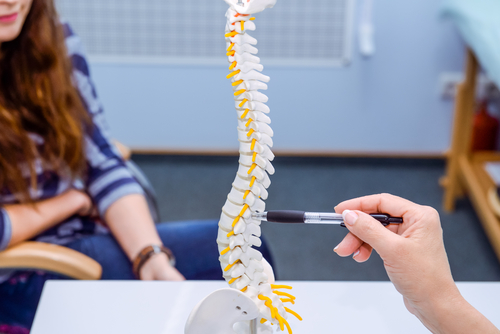Early Spinal Surgery May Lessen Nerve Injury in Sanfilippo Syndrome

Medical records of children with diseases related to the buildup of glycosaminoglycans, including Sanfilippo syndrome, show that spinal fusion surgery helped to ease the damage associated with these conditions, a study reported.
Its researchers recommend early spinal cord decompression to prevent or reverse neurological injuries.
The study, “Clinical Manifestations and Surgical Management of Spinal Lesions in Patients With Mucopolysaccharidosis: A Report of 52 Cases,” was published in the journal Spinal Deformity.
Several diseases are caused by a buildup in a group of sugar molecules called glycosaminoglycans, altogether known as mucopolysaccharidosis (MPS).
Mucopolysaccharidosis type III, or Sanfilippo syndrome, is characterized by mutations in four different genes that result in the loss or impaired function of enzymes that break down these glycosaminoglycans.
Spinal cord abnormalities are common in MPS diseases, and can be treated surgically with approaches such as spinal fusion — permanently connecting two or more vertebrae.
Given the frequency in which spinal damage (lesions) occurs in these patients, investigators at the Hospital de Pediatria Prof. Dr. Juan P. Garrahan, a children’s hospital in Argentina, examined the medical records of 52 children who were treated there for various types of MPS between 1992 and 2011.
Their aim was to describe clinical symptoms, radiological findings, and the surgical management of spinal lesions in these patients.
Children were evaluated at first assessment (baseline) and during follow-up by a health care team and spine surgeons. They were given clinical and radiographic examinations six weeks, three months, six months, and then annually after surgery.
Of these 52 children, 32 were male and 20 were female and all between the ages of 1 and 19. The most frequent spinal problems, seen in 43 patients, occurred in the neck region (cervical), followed by thoracolumbar kyphosis — a rounding of the spine (hunchback) — in 14 patients.
Surgery was performed on 38 children, while the remaining 14 were followed with regular clinic visits that included radiological assessments.
Of those who had surgery, neurological symptoms such as weakness in the limbs and sphincter dysfunction were seen in 21 patients prior to surgery. The remaining 17 patients were neurologically normal.
Spinal fusions using metal reinforcement (instrumented) were done in 28 patients, and the other 10 had non-instrumented fusions (bone grafts). During surgery, patients’ nerve signals were monitored and changes were detected early to prevent damage.
Surgical complications included six patients with a spinal curvature adjacent to the fused areas, known as proximal junctional kyphosis; five patients had cervical pseudarthrosis and the spinal fusion was unsuccessful. Neurologic impairment in six patients required corrective surgery, and four children had wound infections.
Of the 21 patients who had neurological symptoms prior to surgery, six showed neurological improvement after surgery while nine remained unchanged, and six showed neurological deterioration. According to the researchers, these results may be due to delays in the management of the disease.
“This is the largest series published of mucopolysaccharidosis pediatric patients with a surgically treated spinal condition,” the researchers wrote.
“We encourage multidisciplinary assessment and an early evaluation of the cervical spine in these patients,” they added. “We recommend early spinal cord decompression in mucopolysaccharidosis spine pathology to prevent or potentially reverse neurologic impairment.”






